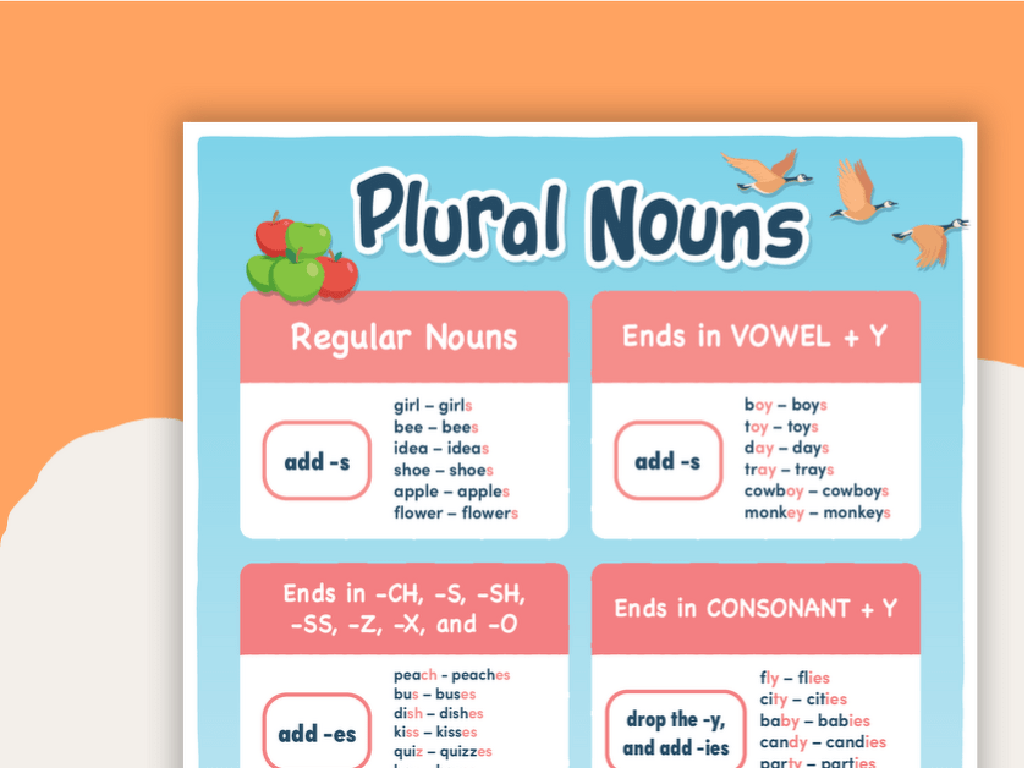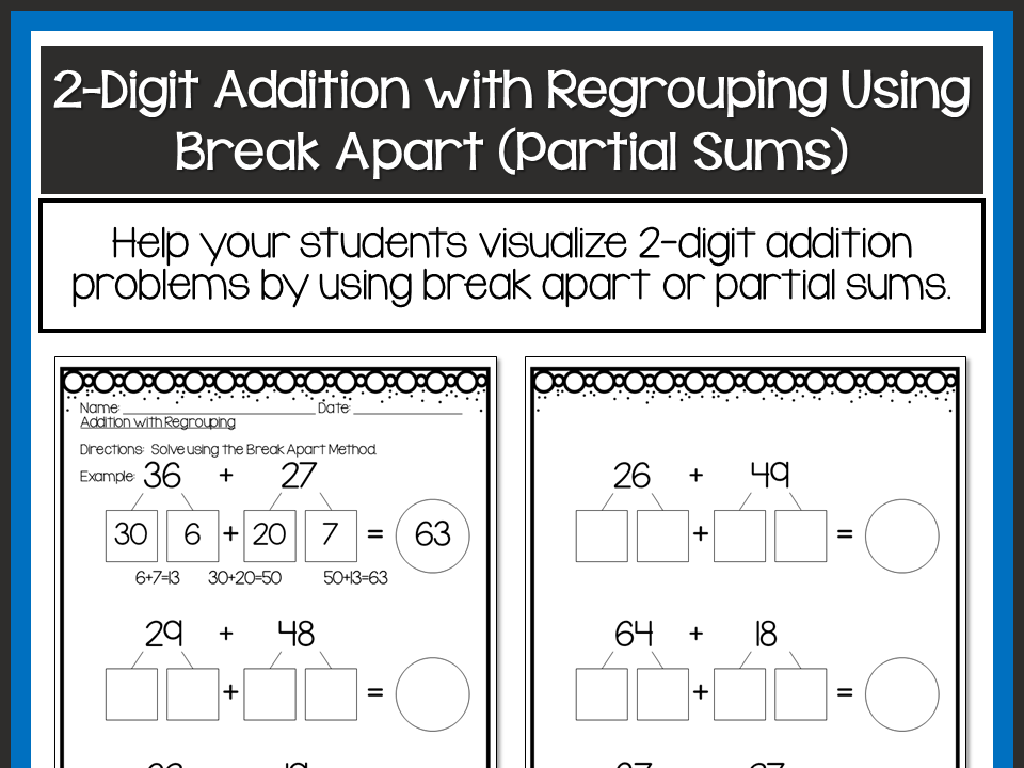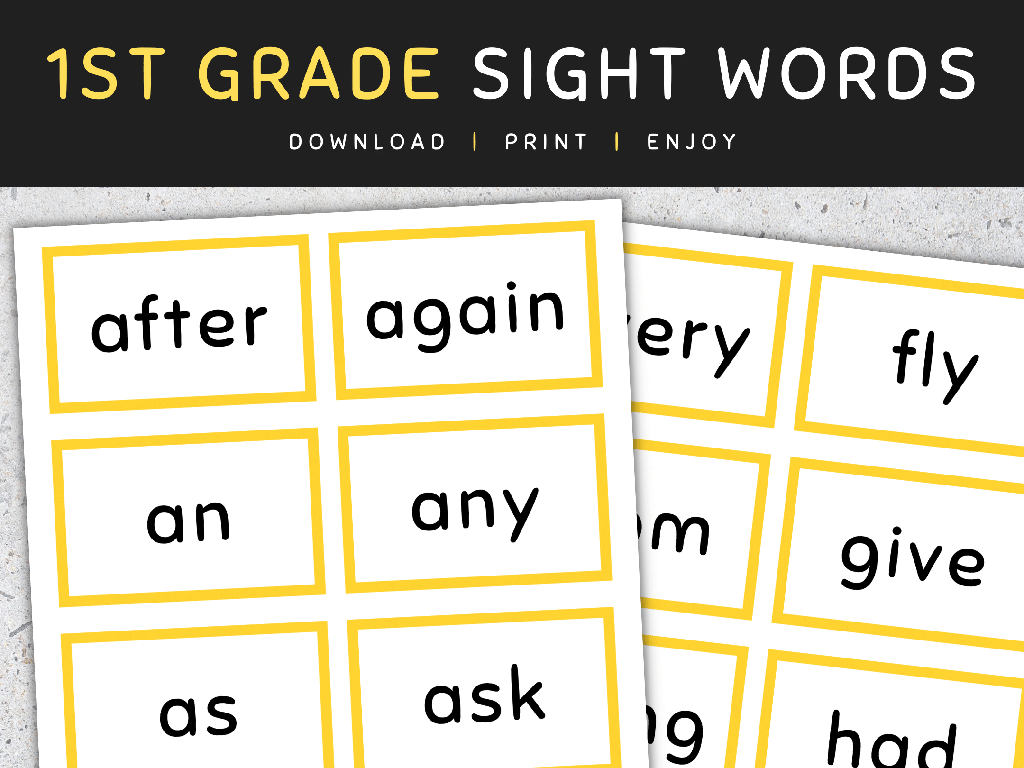Solve Decimal Problems Using Diagrams
Subject: Math
Grade: Fourth grade
Topic: Add And Subtract Decimals
Please LOG IN to download the presentation. Access is available to registered users only.
View More Content
Welcome to Decimals!
– Decimals in daily life
– Decimals appear in prices, time, and stats
– Decimals in money and measurements
– For example, $3.75 or 1.5 meters
– Learn solving with diagrams
– Visual aids make decimal problems easier
– Today’s goal: Mastering decimals
|
This slide introduces students to the concept of decimals and their practical applications in everyday life, such as in money and measurements. Emphasize that understanding decimals is essential for accurate calculations in various scenarios. The goal for today’s lesson is to learn how to solve decimal problems using diagrams, which can help visualize the process and make it more intuitive for students. Encourage students to think of examples where they encounter decimals daily. During the lesson, use diagrams to represent decimal addition and subtraction, and guide students through solving problems step-by-step. By the end of the class, students should feel more comfortable with decimals and be able to use diagrams to solve related math problems.
Understanding Decimals
– Decimals represent fractions
– Like fractions, decimals show parts of a whole
– Decimals for numbers between wholes
– They fill the gaps between whole numbers
– Example: 0.5 is half
– Halfway between 0 and 1 is 0.5
– Example: 0.25 is a quarter
– A quarter way between 0 and 1 is 0.25
|
This slide introduces the concept of decimals to fourth-grade students. Begin by explaining that decimals are another way to show parts of a whole, similar to fractions. Emphasize that decimals are particularly useful for representing numbers that aren’t whole, providing examples such as 0.5 to represent half and 0.25 for a quarter. Use visual aids like pie charts or number lines to illustrate these points. Encourage students to think of decimals as another way to express money, measurements, and other quantities that aren’t whole numbers. This foundational understanding will be crucial as they learn to add and subtract decimals in future lessons.
Place Value Review with Decimals
– Review place value basics
– Explore tenths, hundredths, thousandths
– Tenths are 1/10, hundredths are 1/100, thousandths are 1/1000
– Activity: Identify decimal place values
– Look at a decimal number and name the place value of each digit
– Practice with decimal diagrams
– Use visual aids like grids to understand decimals
|
Begin with a quick review of place value for whole numbers to ensure a solid foundation. Then, introduce decimals by explaining the concept of tenths, hundredths, and thousandths, using visual aids like place value charts. For the activity, provide students with several decimal numbers and ask them to identify the place value of each digit. This can be done using diagrams such as place value charts or base-ten blocks. Encourage students to draw their own diagrams to represent decimal numbers. Offer a variety of examples and use peer learning for students to explain their reasoning to each other. This will help solidify their understanding of decimal place values.
Adding Decimals with Diagrams
– Visualize decimal addition
– Use base-ten blocks to represent decimals
– Align decimals by place value
– Ensure each decimal is in the correct column
– Example: 0.3 + 0.6
– Diagram shows 3 tenths plus 6 tenths equals 9 tenths
– Practice with base-ten blocks
|
This slide introduces students to the concept of adding decimals with the help of visual aids like base-ten blocks. Start by explaining how each block represents a tenth and how they can be used to visualize decimal numbers. Emphasize the importance of aligning decimals by their place value to ensure accurate addition. Use the example of adding 0.3 (three tenths) and 0.6 (six tenths) to show how the blocks combine to make 0.9 (nine tenths). Encourage students to practice with base-ten blocks to build a concrete understanding of decimal addition. This hands-on activity will help solidify the concept and prepare them for more complex decimal operations.
Subtracting Decimals with Diagrams
– Diagrams aid decimal subtraction
– Align numbers by place value
– Place each decimal digit in the right column
– Example: 0.8 – 0.2
– Use a number line or blocks to show 0.8 minus 0.2
– Visual models clarify subtraction
– Visuals help grasp ‘taking away’ concept
|
This slide introduces students to the concept of subtracting decimals using diagrams, which can make the abstract concept of decimal subtraction more concrete. Emphasize the importance of aligning decimal numbers by their place value to ensure accuracy. For example, when subtracting 0.8 – 0.2, students can use a visual model such as a number line to represent the numbers and show the ‘taking away’ process. Visual models like number lines or base-ten blocks can help students better understand and visualize the subtraction of decimals. Encourage students to draw their own diagrams to solve decimal subtraction problems.
Solving Decimal Problems with Diagrams
– Practice adding with diagrams
– Practice subtracting with diagrams
– Example: 1.2 + 0.7
– Visualize 1.2 and 0.7 on a number line, then combine
– Example: 2.5 – 1.3
– Show 2.5 on a number line, remove 1.3 to find the difference
|
This slide is designed for a class activity where students will practice adding and subtracting decimals using diagrams. For adding 1.2 and 0.7, guide the students to draw a number line and represent each decimal as a distinct length. They should then combine these lengths to find the sum. For subtracting 2.5 and 1.3, instruct them to represent 2.5 on a number line, then remove a length of 1.3 to find the remaining value. Encourage students to discuss their methods and reasoning with the class. Provide additional practice problems for students who finish early or need more practice.
Class Activity: Decimal Diagram Challenge
– Pair up for decimal problems
– Use diagrams for addition & subtraction
– Draw a number line or grid to add/subtract decimals
– Calculate and find the answers
– Discuss solutions with the class
– Explain your method and answer to the class
|
This activity is designed to enhance students’ understanding of decimals through collaborative problem-solving and visualization. Students will work in pairs to tackle a set of decimal addition and subtraction problems. They should use diagrams such as number lines or grids to help them visualize the decimals and perform the calculations. After solving the problems, each pair will share their solutions and the methods they used with the rest of the class. This will not only help them articulate their thought process but also expose them to different ways of solving the same problem. For the teacher: Prepare a worksheet with different levels of decimal problems. Ensure that each pair has a mix of addition and subtraction questions. Walk around the classroom to assist and encourage discussion. Have a few pairs present their methods to the entire class to foster a collaborative learning environment.
Conclusion: Decimals and Diagrams
– Review decimal concepts
– Diagrams aid in understanding
– Visuals help grasp decimal addition and subtraction
– Reflect on today’s learning
– Think about what was new or difficult
– Open floor for Q&A session
|
As we wrap up today’s lesson on decimals, take a moment to review the key concepts we’ve covered. Emphasize how diagrams, such as number lines or place value charts, can make it easier for students to visualize and solve problems involving decimals. Encourage students to reflect on what they’ve learned, what they found interesting, and what they may have struggled with. This reflection helps solidify their understanding and gives you insight into their learning process. Finally, open the floor for a Q&A session, allowing students to ask questions or express any concerns they might have. This is also an opportunity for peer learning, as students can learn from the questions and explanations of others.





